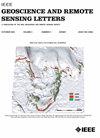面向高分辨率遥感图像语义分割的多尺度对抗特征共享
IF 4
3区 地球科学
Q2 ENGINEERING, ELECTRICAL & ELECTRONIC
引用次数: 8
摘要
高分辨率遥感图像的语义分割是遥感分析中的一项重要任务。尽管基于深度卷积神经网络(DCNN)的语义分割模型具有强大的像素分类能力,但由于地物在HRSI中具有多尺度、多分布的特点,在获取语义间连续性和边界外精度方面仍面临挑战。受迁移学习的启发,本研究提出了一种高效的语义分割框架SMAF-Net,该框架将多尺度对抗特征共享到一个u型语义分割模型中。具体而言,该算法利用训练良好的生成对抗网络获得的多尺度对抗特征表示来掌握像素相关性,进一步提高多尺度地物的边界精度。波茨坦和瓦伊欣根数据集的对比实验表明,该框架在HRSI的语义分割方面取得了较大的进步。本文章由计算机程序翻译,如有差异,请以英文原文为准。
SMAF-Net: Sharing Multiscale Adversarial Feature for High-Resolution Remote Sensing Imagery Semantic Segmentation
Semantic segmentation of high-resolution remote sensing imagery (HRSI) is a major task in remote sensing analysis. Although deep convolutional neural network (DCNN)-based semantic segmentation models have powerful capacity in pixel-wise classification, they still face challenge in obtaining intersemantic continuity and extraboundary accuracy because of the geo-object’s characteristic feature of diverse scales and various distributions in HRSI. Inspired by the transfer learning, in this study, we propose an efficient semantic segmentation framework named SMAF-Net, which shares multiscale adversarial features into a U-shaped semantic segmentation model. Specifically, it uses multiscale adversarial feature representation obtained from a well-trained generative adversarial network to grasp the pixel correlation and further improve the boundary accuracy of multiscale geo-objects. Comparison experiments on the Potsdam and Vaihingen data sets demonstrate that the proposed framework can achieve considerable improvement in the semantic segmentation of HRSI.
求助全文
通过发布文献求助,成功后即可免费获取论文全文。
去求助
来源期刊

IEEE Geoscience and Remote Sensing Letters
工程技术-地球化学与地球物理
CiteScore
7.60
自引率
12.50%
发文量
1113
审稿时长
3.4 months
期刊介绍:
IEEE Geoscience and Remote Sensing Letters (GRSL) is a monthly publication for short papers (maximum length 5 pages) addressing new ideas and formative concepts in remote sensing as well as important new and timely results and concepts. Papers should relate to the theory, concepts and techniques of science and engineering as applied to sensing the earth, oceans, atmosphere, and space, and the processing, interpretation, and dissemination of this information. The technical content of papers must be both new and significant. Experimental data must be complete and include sufficient description of experimental apparatus, methods, and relevant experimental conditions. GRSL encourages the incorporation of "extended objects" or "multimedia" such as animations to enhance the shorter papers.
 求助内容:
求助内容: 应助结果提醒方式:
应助结果提醒方式:


